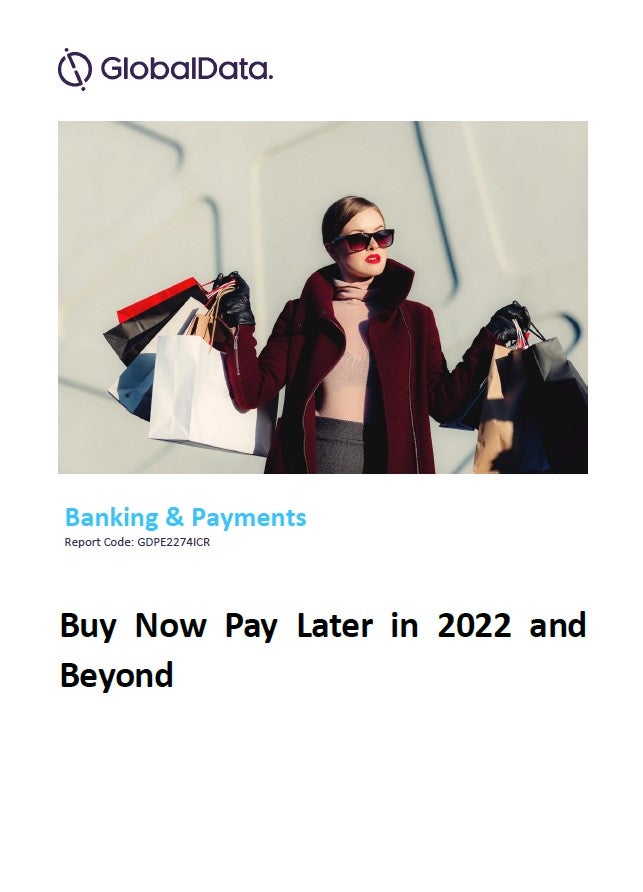The ease of access, quality of service, and speed that online lenders provide will further contribute to the upward trend of the alternative lending market in Russia.
Over the last few years, lending in Russia has seen a slight shift from bank-based lending towards digital lending, following a tightening of regulation and the rise of convenient alternative providers. Tightening regulation for banks and the easing of procedures for digital disruptors have facilitated the environment for the development of online lending in Russia.
How well do you really know your competitors?
Access the most comprehensive Company Profiles on the market, powered by GlobalData. Save hours of research. Gain competitive edge.

Thank you!
Your download email will arrive shortly
Not ready to buy yet? Download a free sample
We are confident about the unique quality of our Company Profiles. However, we want you to make the most beneficial decision for your business, so we offer a free sample that you can download by submitting the below form
By GlobalDataThe Russian central bank has put regulations in place forcing banks to offer consumer credit only to those with good credit histories and low debt burdens, while alternative lenders are relatively unencumbered by these restrictions.
Online lending companies like MoneyMan are well-positioned within the lending sector; however, they are still not able to offer low interest rates comparable with banks, as lending from the central bank to alternative lenders has higher rates. Currently the microfinance lending market share currently stands at just over 1% of total consumer lending in Russia, but the demand for short-term loans will accelerate this position.
The country’s unsecured consumer loan market showed signs of growth in Q4 2016 and Q1 2017, following the negative impact of the economic slowdown of 2013–14. According to National Bureau of Credit Histories (NBKI) statistics, in H1 2017 unsecured loans grew by 3.4%. This is in contrast with the negative growth (-2.9%) in the same period of 2016. In the first eight months of 2017, banks’ retail lending portfolios were up 7.0%, to a total of RUB11.5trn.
The market share for online alternative lending is still very small and can’t compete with banks’ lending. To emphasise this, 87% of Russian consumers would choose a bank with a branch presence in order to take a loan, compared to only 1% who would choose a specialist alternative lender, according to GlobalData’s 2017 Retail Banking Insight Survey. This sector will most likely develop in future and become a sustainable part of the short-term lending market in Russia and other countries within Europe.
The survey also revealed that the top three reasons when choosing a loan provider are ease of access (selected by 66% of all respondents), the good reputation of the provider (62%), and a good rate of interest (59%).
One of the biggest players in this market, MoneyMan, established its position in the market from a very early stage, with a 20.5% market share in alternative lending in 2016. The company is growing strongly, having issued loans worth RUB2.26bn in H1 2017 – 2.8 times more than the same period in 2016. This further emphasizes the strong demand for short-term loans in Russia.
“The online lending model displaces the traditional offline model, designed to build a broad network of branches. The share of online lending companies grew 6.5 times from 3% in 2015 to 19.9% in 9M 2017, in less than two years. Digital lending allows companies to reduce costs. It is much more operationally efficient due to innovative solutions that automate resource-consuming processes in lending.
“Digital lending also increases the level of financial inclusion, providing the opportunity to get funds practically anywhere in the country, in a quick and convenient way. This explains the interest of the regulator in online lending, because providing citizens with access to financial resources is one of the most important tasks of the Russian monetary authorities for now,” said Boris Batine, co-founder and CEO at ID Finance (which controls MoneyMan company).
Although microfinance outstanding balances account for only 1.2% of the total debt on unsecured consumer loans, this is the fastest (and currently the only) area of growth in unsecured consumer lending. As new companies enter the market and offer more attractive micro loans, this will help expand consumer lending in Russia. This is proved by the fact that overall microcredit loans from non-banks increased by 23% in January–May 2017, compared to 17% in the same period of 2016.








